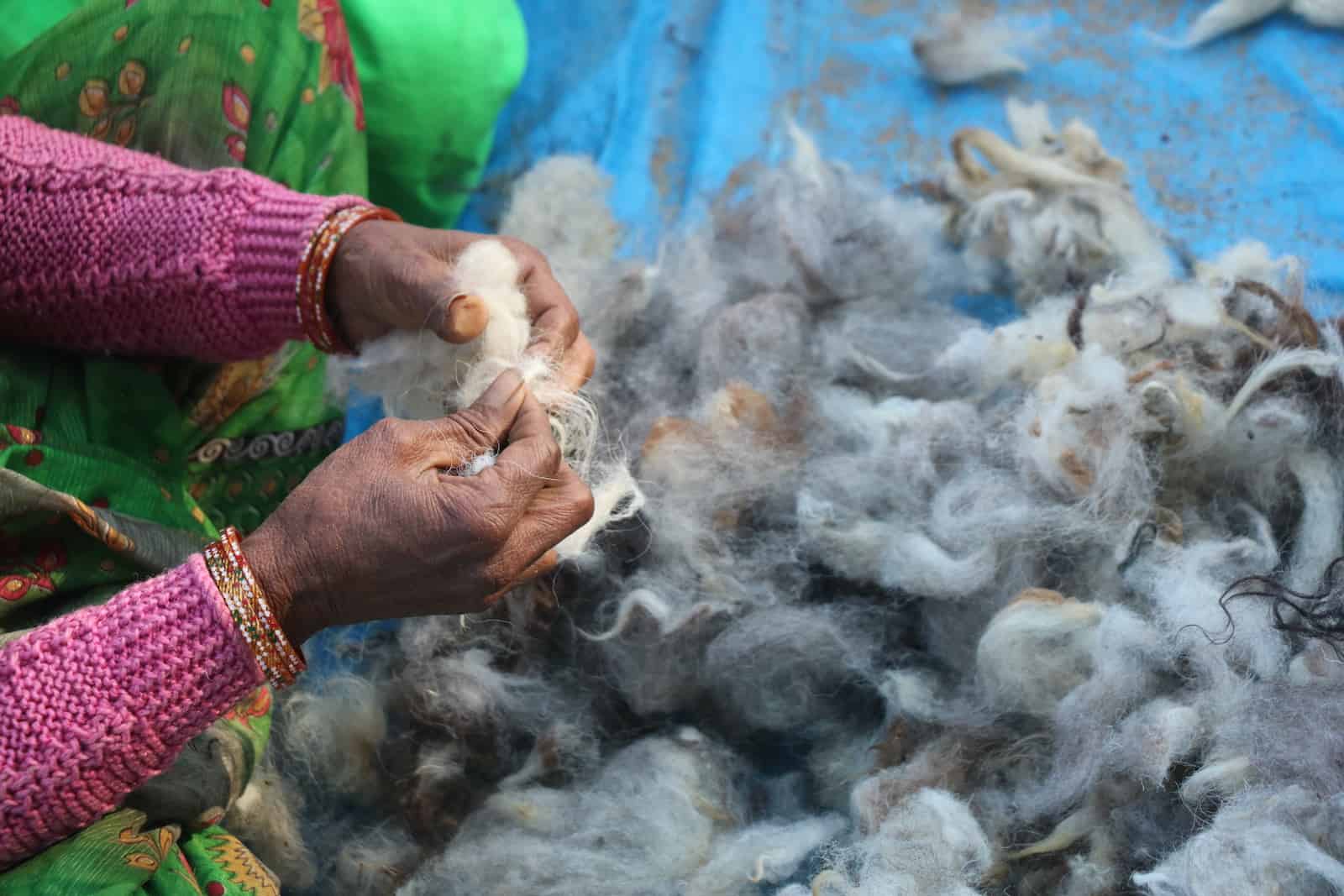
Despite having the second highest sheep population of the world at 74.26 million animal heads, and producing a fairly large amount of wool, India continues to rely on imported raw wool for meeting a large share of its industry requirements. Of the total wool produced in India, about 85% is carpet grade wool, 5% apparel grade and remaining 10% coarse-grade wool. The carpet grade wool which India is known for is produced by its native sheep population which are reared in extensive systems of herd management by pastoral communities in different geographies.
Over the last few decades, pastoralists have been experiencing ever increasing difficulties in earning a viable income through wool sales as sheep wool prices have recorded significant declines in many parts of the country. So much so that the logic of herd management in some regions is now solely focused on animal sales instead of the earlier more resilient approach that relied on rearing native multipurpose breeds to maximise incomes.
Given the importance of sustaining pastoralist lifestyles, the Centre for Pastoralism conducted a survey across seven Indian states to assess value chains of the Indian wool economy, with reference to sheep wool. We found that the main problem local sheep wool is facing today across the country is that of declining demand and an associated fall in prices, caused by a variety of factors. These include a rise in import of raw wool, easy availability of cheaper products made from acrylic fibres and a shift in consumer preferences. Together, all of these have led to a decline of the economics of wool sales for the herders, which is further leading to two key consequences. First, the herder is now increasingly rearing sheep with the purpose of animal sales. They are choosing meaty breeds over native multipurpose breeds to maximise their incomes. This shift in herder preferences is causing a decline in the types of breeds one can find in the herds maintained by pastoralists. Second, craftspeople who have in the past engaged in weaving traditional woollen textiles are facing a loss of livelihood. The deterioration of local markets for woollen textiles is forcing them to look for alternative sources of livelihood. If this trend continues, it will add to the difficulties of conserving the rich cultural heritage of woollen textile weaving that India possesses.
Therefore there is a need for reviving the use of indigenous raw wool in multiple and creative ways. Further complicating the situation is the fact that the state of the sheep wool value chains varies from region to region with the situation being better in some, while not so good in others. What is needed is a context specific approach that involves supporting both the pastoralist communities and the traditional woollen textile sector. CfP believes there is a need for paving the way for increasing the use of indigenous wool in other sectors such as automobiles and construction.
Read our report for details and reach out to us for queries, comments and potential collaborations!